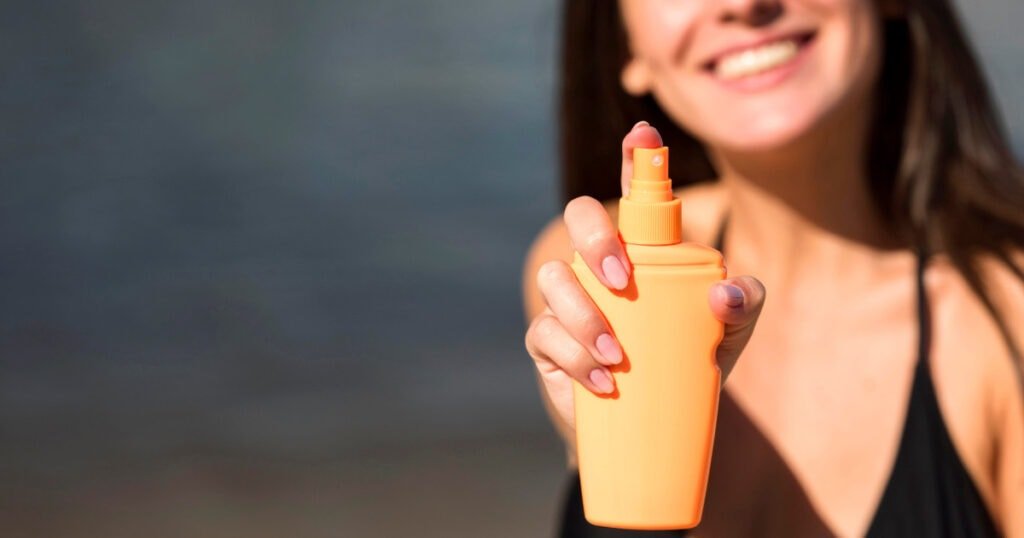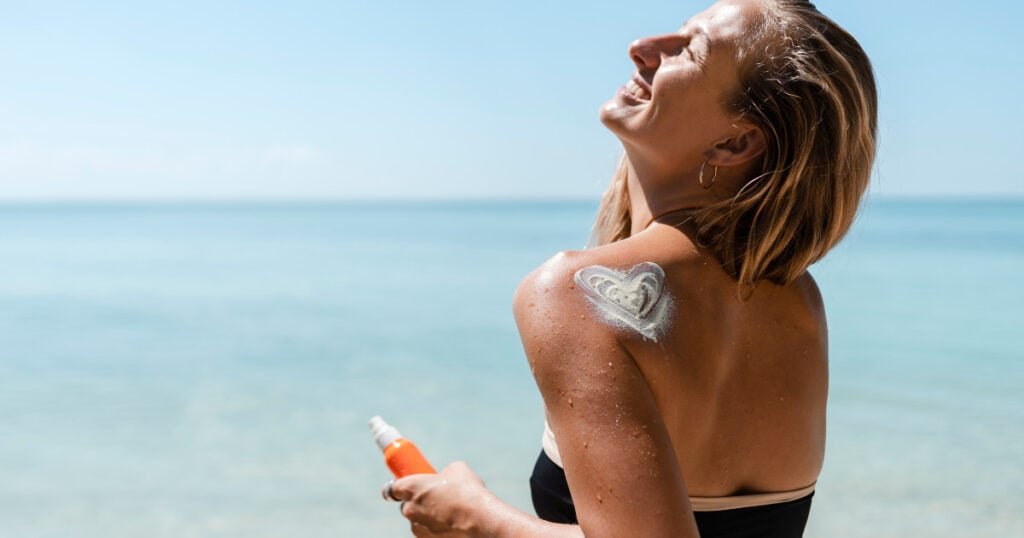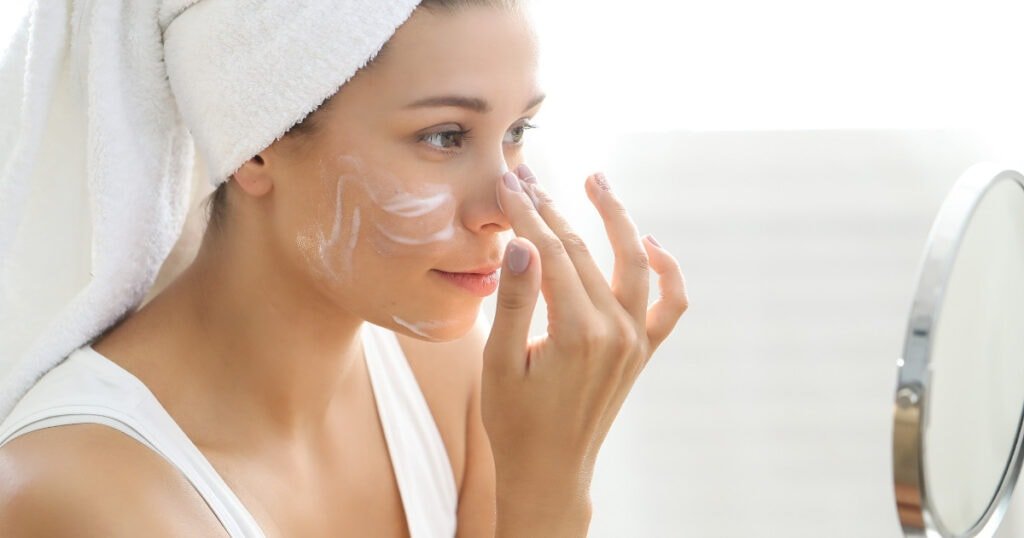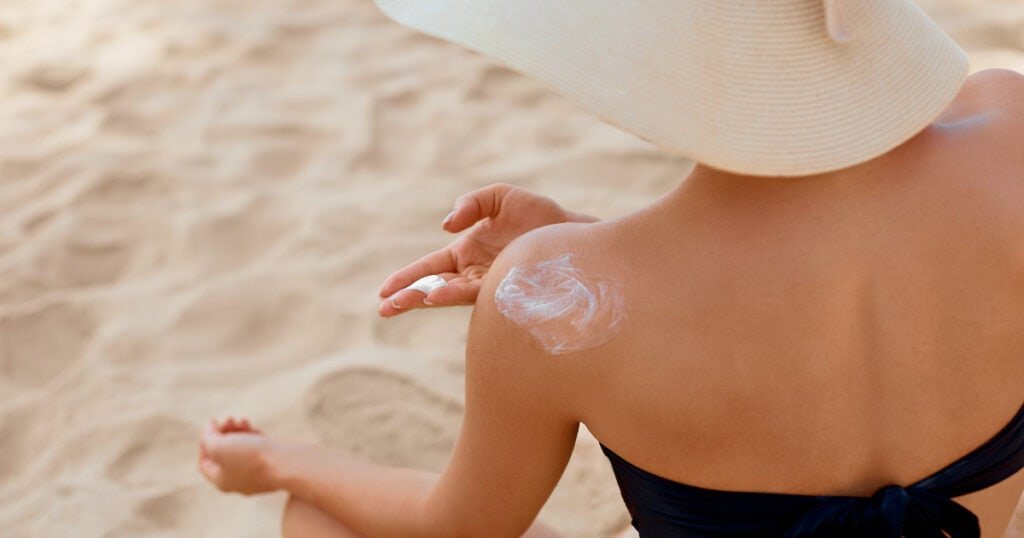Choosing the right sun protection product is hard due to the multiple options available. Suncream, sunscreen, and sunblock may sound similar, but they have different characteristics that make them appropriate for different occasions.

This article will compare and contrast these three products and provide information on SPF values, waterproof vs. water-resistant properties, chemical vs. physical ingredients, broad-spectrum protection levels, and choosing the right product for your skin type and sensitivity. By understanding these differences, you can select the product that will be the best protection for your skin.
Let’s start by investigating the truth of a standard theory; sunscreens are ideal for daily use, whereas sunscreen is better suited to more active outdoor days.
Suncream vs. Sunscreen vs. Sunblock
Let’s look at the difference between these three items that protect you from the sun’s rays.
Suncream, sunscreen, and sunblock are all terms used to describe products that can protect your skin from UV radiation. Sunscreen usually refers to synthetic chemical compounds found in commercial products, while sunblock typically implies physical barriers such as zinc oxide or titanium dioxide.
Suncreams may contain chemical and physical ingredients, but they also often include additional moisturizing agents, making them ideal for everyday use. Chemical sunscreens absorb ultraviolet light before reaching your skin, while physical sunscreens form a barrier on top of the skin to block harmful rays.
The type of protection you choose will depend on your particular needs and preferences; however, whatever product you use should always have an SPF rating of at least 15 or higher.
Ideal for daily use
If you’re looking for long-lasting protection from the sun’s rays, then lotions, creams, and blocks are all great options for daily use.
Sunscreens come in various SPF levels, corresponding to how much UVB radiation is blocked. A higher SPF number will provide more protection.
When choosing a sunscreen for daily use, looking for water-resistant sunscreens with an SPF of 30 or higher is essential. Water-resistant sunscreens can stay on your skin even when exposed to sweat and water. In addition, make sure the sunscreen products you choose are safe and free from any ingredients that could irritate your skin, such as parabens or fragrances.
Applying sunscreen generously every two hours and after swimming or sweating heavily is also essential to ensure adequate sun protection throughout the day.
Additionally, always wear protective clothing such as hats or sunglasses while outdoors to help protect against harmful UV rays. To maximize sun protection during summer, seek shade whenever possible between 10 am and 4 pm when the UV index is highest.
By taking these steps towards optimal sun safety, you can enjoy being outside without damaging your skin!

SPF differences
Discovering the correct SPF for you can make all the difference in protecting your skin from sun damage!
Sunscreen, sunblock, and suncream are all designed to protect your skin from damaging UV rays from the sun.
Sunscreens contain a chemically active ingredient that absorbs UV radiation, while sunblocks work by reflecting UV radiation away from your skin.
The factor to consider when selecting a sunscreen is its Sun Protection Factor (SPF).
A sunscreen’s SPF rating indicates how much protection it provides against UVA and UVB rays.
Generally speaking, higher SPF ratings provide better protection; however, even an SPF of 15 will filter out about 93% of UVB radiation, which is enough for most everyday activities.
Remember that no sunscreen can completely block out all UV exposure and should be reapplied regularly throughout the day.
Choosing a product with an appropriate SPF level will help ensure adequate protection against UVA and UVB radiation, reducing the risk of skin cancer and other forms of sun damage.
Waterproof vs. Water-resistant
When protecting your skin from the sun, you should know the difference between waterproof and water-resistant sunscreen; one will last longer when exposed to water or sweat, while the other may need more frequent application.
Waterproof sunscreen is formulated with higher levels of protection that are resistant to water and sweat. It won’t wash off during swimming, sweating, or even wiping your face with a towel. This type of sunscreen provides extended protection from UVA/UVB radiation for an extended period of time — up to 80 minutes in some cases.
Water-resistant sunscreen offers similar sun protection but can only withstand exposure to water or sweat for 40–80 minutes before needing reapplication. However, this type of sunscreen still offers long-lasting and reliable UVA/UVB radiation protection if applied correctly and frequently throughout the day as needed.
It’s important to note that neither waterproof nor water-resistant sunscreen can block 100% of UV radiation — so regardless of which one you choose, ensure that you are protected by reapplying regularly and covering up clothing when possible.

Chemical vs. Physical
It’s essential to understand the difference between chemical and physical sunscreens. They may seem like similar options, but their effects can be vastly different!
Chemical sunscreen ingredients are designed to absorb UV rays before they can penetrate your skin. These ingredients, such as oxybenzone and avobenzone, form a barrier that filters out UVA and UVB radiation. This means that chemical sunscreen can protect your skin from both types of harmful radiation.
On the other hand, physical sun protection relies on mineral sunscreen ingredients like titanium oxide or zinc oxide, which physically deflect UV rays away from your skin. These minerals create a reflective barrier on the surface of your skin that bounces rays off before they can reach deeper layers. While this method isn’t completely blocked out all radiation (it usually has an SPF value between 2-50), it provides some degree of protection against UVA and UVB radiation.
Broad-spectrum protection
Broad-spectrum protection refers to products that protect against both types of ultraviolet radiation. A broad-spectrum sunscreen, sunblock, or suncream will block out UVA and UVB light, providing the best protection against these damaging rays.
Sunscreens contain chemical ingredients such as oxybenzone or octinoxate, which absorb UV radiation before it can reach your skin. Sunblocks contain physical ingredients such as titanium dioxide or zinc oxide, which act as a barrier on top of your skin, reflecting away most of the UV radiation before it can penetrate your skin.
When applied correctly and frequently, both products can provide effective, long-lasting protection against harmful UV exposure. In addition to using a broad-spectrum sunscreen or sunblock product, wearing protective clothing like wide-brimmed hats and long-sleeved shirts can further reduce the risk of exposure to damaging UV rays.

Skin type and sensitivity
Knowing your skin type and sensitivity is critical to finding the right sun protection product. It’s important to know if your skin has special needs, such as sensitive skin, or if you’re prone to allergic or other skin reactions.
The wrong product can cause premature skin aging or unwanted breakouts, while the right one can offer optimal protection and nourishment.
The best way to determine which product suits your particular skin type is by consulting with a dermatologist who can help you identify any underlying issues that might need special care regarding protecting your skin from the sun. Additionally, they can recommend a sunscreen that offers broad-spectrum protection against both UVA and UVB rays without irritating sensitive areas of the face or body.
Conclusion
Suncare products are essential for protecting your skin from the sun’s harsh rays, but knowing which one is right for you can be difficult.
Suncream, sunscreen, and sunblock offer varying protection levels depending on SPF levels, water resistance, chemical components, and whether or not they offer broad-spectrum coverage.
The product that will work best depends on your skin type and sensitivity. Do research to see which fits your lifestyle best – after all, taking care of your skin should be a priority!
Can’t decide? Why not try a combination of two or three? With multiple options available today, you can find something that works perfectly.
